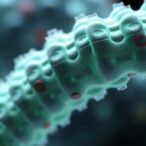
In recent years, the quest to engineer magnetic properties in solid-state materials has become a cornerstone of advances in spintronics, a field promising revolutionary breakthroughs in data storage, quantum computing, and low-power electronics. The ability to manipulate magnetic ordering within semiconductors, however, remains a formidable challenge due to intrinsic limitations on doping magnetic elements into conventional crystal lattices. A persistent obstacle has been the low solubility of magnetic ions within many host materials, typically restricting substitutional doping concentrations to below five percent. This limitation directly caps the attainable ferromagnetic transition temperatures and, consequently, device performance and stability.
Despite these constraints, the landscape of magnetic semiconductors is being dramatically reshaped by innovative strategies that circumvent solubility bottlenecks. A standout is the intercalation of magnetic ions into layered two-dimensional atomic crystals (2DACs), a class of materials that feature atomically thin sheets held together by relatively weak van der Waals forces. Intercalation in this context refers to the insertion of ions or molecules into the interlayer spaces without disrupting the strong in-plane covalent bonding networks. This approach unlocks the possibility of doping magnetic species at concentrations that can exceed 50 percent, far beyond the traditional limits of substitutional doping.
Still, chemical and electrochemical intercalation methods historically have been limited to a handful of specific material systems, curtailing their applicability and versatility. The scarcity of broadly applicable techniques posed a critical bottleneck for the modular design of magnetic 2DACs with tailored properties. Addressing this, a recent breakthrough has been reported by Zhou, J., Zhou, J., Wan, Z., and collaborators, who have developed a universal two-step intercalation and cation-exchange methodology that enables the creation of highly ordered magnetic intercalation superlattices (MISLs) across a diverse suite of layered materials.
.adsslot_LSno6YI3cu{ width:728px !important; height:90px !important; }
@media (max-width:1199px) { .adsslot_LSno6YI3cu{ width:468px !important; height:60px !important; } }
@media (max-width:767px) { .adsslot_LSno6YI3cu{ width:320px !important; height:50px !important; } }
ADVERTISEMENT
The first step of their process involves the controlled insertion of monovalent transition-metal cations such as Cu⁺ and Ag⁺, which act as sacrificial species that temporarily occupy the van der Waals gaps. These pre-intercalated structures then undergo cation-exchange reactions in which magnetic ions—including divalent species like Mn²⁺, Fe²⁺, Co²⁺, and Ni²⁺, as well as trivalent rare-earth cations Eu³⁺ and Gd³⁺—replace the monovalent ions. This two-step technique preserves the host lattice’s integrity while enabling fine control over the concentration and ordering of magnetic intercalants.
Crucially, the researchers demonstrated the successful application of this method to a broad range of 2DAC hosts. This library includes quintessential group-VIB transition metal dichalcogenides such as MoS₂, MoSe₂, MoTe₂, WS₂, WSe₂, and WTe₂, all known for their rich electronic and optoelectronic behavior. Beyond these, the approach was extended to group-IVB, -VB, -IIIA, -IVA, and -VA layered compounds including TiS₂, NbS₂, NbSe₂, TaS₂, In₂Se₃, SnSe₂, Bi₂Se₃, and Bi₂Te₃. Such versatility is remarkable, as it spans semiconductors, topological insulators, and even layered superconductors, laying a firm foundation for systematic exploration of magnetic phenomena in these diverse systems.
This elaborate control over both the type and concentration of magnetic intercalants enables the tailored tuning of magnetic ordering temperatures and coercivities within the MISLs. Unlike conventional doping regimes, where limited solubility caps the achievable saturation magnetizations and Curie temperatures, the superlattice strategy enhances magnetic interactions by minimizing disorder and promoting spatial periodicity. The resulting structures are not only scientifically intriguing but also technologically promising for integrating magnetism with existing layered materials platforms.
From a fundamental perspective, the MISL architecture opens unparalleled opportunities to study emergent magnetic phases, including complex spin textures and low-dimensional magnetism in atomically thin environments. The interplay between strong spin–orbit coupling intrinsic to many 2DAC hosts and various magnetic dopants can give rise to phenomena such as topological magnetism, magnetic skyrmions, and tunable spintronic functionalities. Deploying the cation-exchange approach thereby sets the stage for experimental validation of theoretical models that have long predicted exotic quantum states in 2D materials.
The technological ramifications extend to device engineering as well. Highly ordered magnetic superlattices with controlled doping gradients and interface quality could revolutionize spin filters, magnetic tunnel junctions, and nonvolatile memories based on layered crystals. Moreover, the ability to interchange cations post-synthesis facilitates combinatorial tuning of magnetic, electronic, and structural attributes, speeding up material discovery and optimization processes relevant for industrial applications.
Distinguishing this approach is its scalability and adaptability. The two-step intercalation and cation-exchange pathway is amenable to chemical vapor transport and solution-based routes, potentially compatible with large-area fabrication techniques requisite for commercial technologies. This contrasts sharply with many previously reported intercalation methods, which are often restricted to small-scale, lab-based experiments that suffer from poor reproducibility and limited material scope.
In sum, the development of this comprehensive cation-exchange strategy marks a pivotal advancement in the field of magnetic 2DACs. By harmonizing chemical ingenuity with materials engineering, the work transcends longstanding barriers to magnetic doping and unlocks a spectrum of applications in spintronics and quantum devices. As demonstrated by Zhou and colleagues, the path to tunable magnetism in atomically layered crystals is now not only feasible but versatile, efficient, and remarkably general.
Looking forward, the fusion of MISLs with emerging two-dimensional heterostructures and device architectures heralds a new era where magnetic ordering can be dynamically controlled by external stimuli such as electric fields, strain, or light. This synergistic control promises transformative functionalities in next-generation information technologies, advancing both fundamental science and applied materials innovation.
The ramifications also extend beyond traditional spintronic domains, impacting areas such as quantum sensing, neuromorphic computing, and magneto-optical devices. The platform established by the cation-exchange intercalation method equips researchers to systematically manipulate and probe the interplay of charge, spin, and topology at the atomic layer limit, fueling discoveries at the frontier of condensed matter physics.
Zhou, J., Zhou, J., Wan, Z., et al. have thus set the stage with an elegant yet powerful toolkit to harness the latent magnetism of layered crystals, providing a blueprint for future explorations that intersect chemistry, physics, and engineering in unprecedented ways.
Subject of Research: Magnetic ordering in layered two-dimensional atomic crystals via cation-exchange intercalation.
Article Title: A cation-exchange approach to tunable magnetic intercalation superlattices.
Article References:
Zhou, J., Zhou, J., Wan, Z. et al. A cation-exchange approach to tunable magnetic intercalation superlattices. Nature (2025). https://doi.org/10.1038/s41586-025-09147-z
Image Credits: AI Generated
Tags: cation-exchange methods in magnetismferromagnetic transition temperatureshigh-concentration magnetic dopinglayered two-dimensional atomic crystalslow-power electronics innovationsmagnetic ion intercalationmagnetic properties engineeringovercoming solubility bottlenecksQuantum Computing Applicationssemiconductor doping limitationsspintronics advancementsTunable magnetic superlattices



